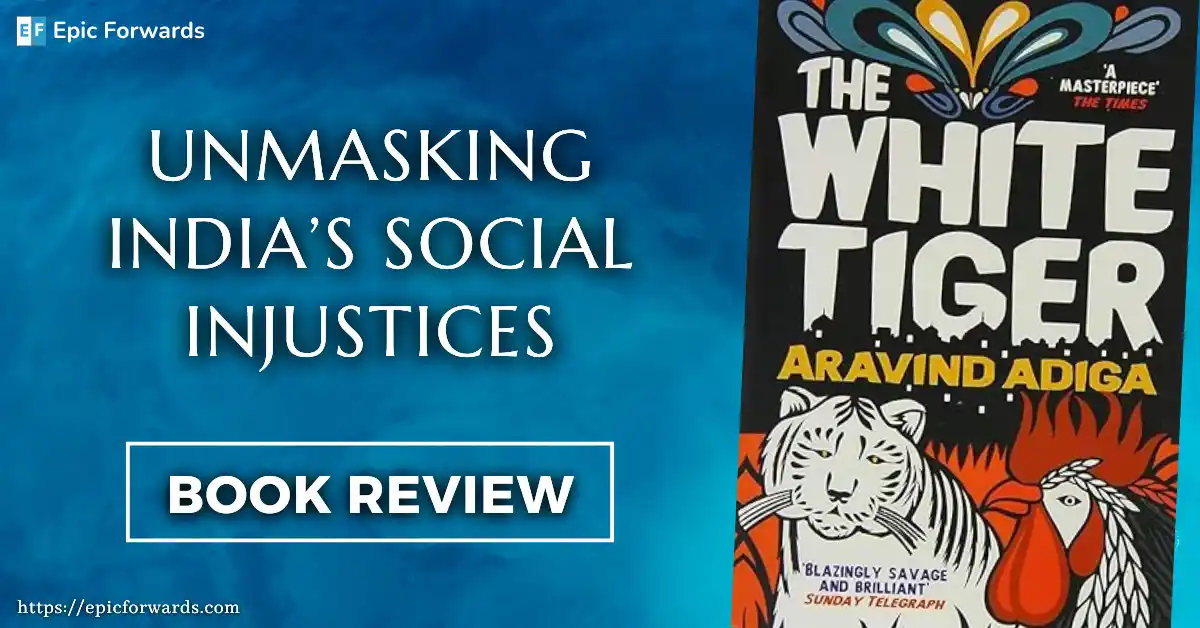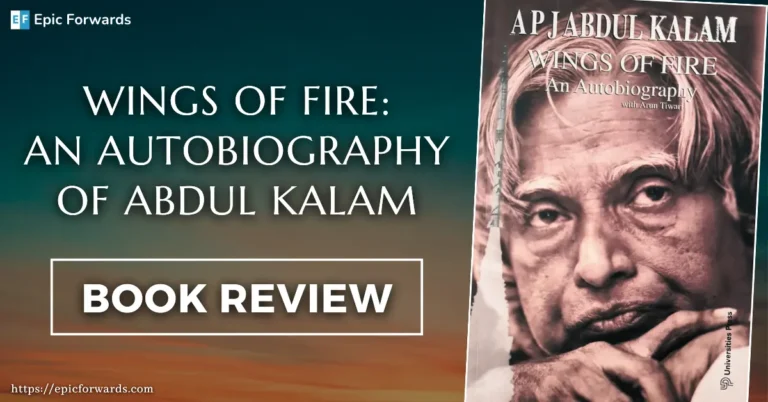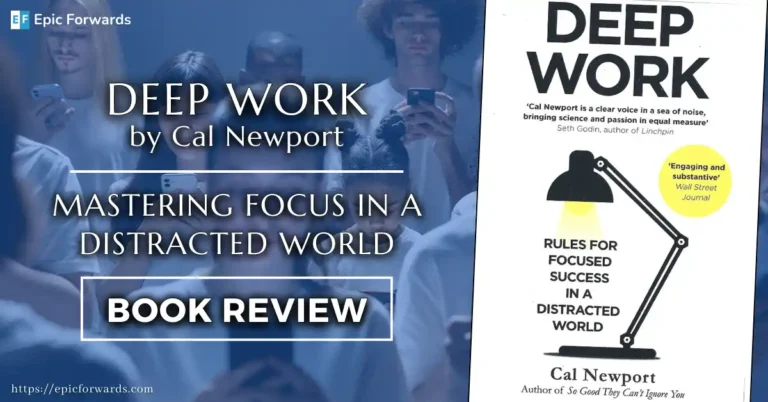Book Title: The White Tiger
Author: Aravind Adiga
Genre: Novel
Publication Date: 2008
Introduction
Aravind Adiga’s The White Tiger is a piercing exploration of modern India’s stark socio-economic divides, rendered through a narrative that’s as darkly humorous as it is brutally honest.
Published in 2008 and crowned with the Booker Prize, the novel not only cemented Adiga’s reputation as a bold storyteller but also spotlighted the pervasive corruption and class struggles that define contemporary Indian society.
This review delves into the layers of Adiga’s work—from its scathing social critique to its compelling narrative style—aiming to unpack how The White Tiger challenges conventional ideas about power, morality, and success.
Plot Summary
Narrated in the first person by Balram Halwai, the novel follows his tumultuous journey from the depths of poverty—symbolized by his origins in “the Darkness”—to a life marked by power and entrepreneurship in Bangalore.
Balram’s story is one of survival and subversion: beginning as a disenfranchised villager with few prospects, he finds employment as a chauffeur for the affluent Ashok. This role, however, becomes the catalyst for a dramatic transformation. As Balram navigates the treacherous corridors of India’s upper echelons, he grapples with betrayal, moral ambiguity, and the corrupting influence of wealth.
A series of pivotal moments—most notably his decision to betray and ultimately murder his employer—propel him into a realm where conventional ethics are upended in the pursuit of self-liberation and economic ascendancy.
Themes
A. Class Struggle and Social Mobility
The White Tiger lays bare the entrenched caste system and stark economic disparities in India. Balram’s arduous climb from “the Darkness” to “the Light” is a potent symbol of breaking free from an oppressive social order.
This transformation not only underscores his personal journey but also serves as a biting critique of a society where upward mobility is both a coveted dream and a near-impossible challenge.
B. Corruption and Morality
At its core, the novel exposes the rampant corruption that plagues every stratum of Indian society—from the corridors of political power to the everyday exploitation of the underprivileged. Balram’s moral descent, marked by his willingness to betray and even commit murder, reflects a harsh reality: in a system rife with exploitation, ethical compromises become a survival mechanism.
C. Globalization
Set against a backdrop of rapid economic growth, The White Tiger delves into the effects of globalization on traditional Indian society. The novel highlights how Western influences and modern business practices intertwine with age-old social hierarchies, deepening the divide between the rich and the poor while reshaping cultural identities.
D. Freedom and Individualism
Balram’s metamorphosis is not just about economic ascension—it’s a quest for personal freedom and self-definition. The metaphor of the “white tiger” embodies his unique, unbridled spirit; a creature that defies norms and escapes confinement. This symbol resonates as a powerful testament to the possibility of reclaiming individuality even in the most oppressive circumstances.
Character Analysis
- Balram Halwai:
As the novel’s narrator and central figure, Balram embodies the struggle for survival in a society riddled with inequity. His journey from a subservient villager to a cunning entrepreneur is marked by moral ambiguity. Balram’s internal conflict—balancing his innate survival instincts with the ethical compromises he makes—drives the narrative and invites readers to question the cost of upward mobility. - Ashok:
Serving as a symbol of India’s affluent class, Ashok represents both the allure and the inherent corruption of wealth. While he occasionally displays a more compassionate side, his overall complicity in the systemic exploitation of those beneath him underscores the complex interplay between privilege and responsibility. - Pinky Madam:
Pinky Madam is a character defined by her internal conflict and evolving role within the narrative. Caught between traditional expectations and modern aspirations, her journey reflects the broader struggle for identity and autonomy in a rapidly changing society. Her gradual disillusionment and the choices she makes highlight the subtle but significant impact of societal pressures on individual agency.
The White Tiger
A stunning literary debut critics have likened to Richard Wright’s Native Son, The White Tiger follows a darkly comic Bangalore driver through the poverty and corruption of modern India’s caste society.
The White Tiger is a narrative genius with a mischief and personality all its own. Amoral, irreverent, deeply endearing, and utterly contemporary, this novel is an international publishing sensation—and a startling, provocative debut.
Writing Style
- Satirical Tone and Dark Humor:
Aravind Adiga employs a biting satirical tone throughout The White Tiger, using dark humor as a lens to critique the socio-economic disparities and corruption prevalent in modern India. This approach not only entertains but also sharpens the novel’s critical edge, making its social commentary both incisive and memorable. - First-Person Narrative for Intimacy and Unreliable Narration:
The use of a first-person narrative brings readers into an intimate, if sometimes unsettling, relationship with Balram. This perspective allows for a personal account of his transformation while simultaneously challenging readers to discern truth from self-serving rationalizations, thus creating a layer of unreliable narration that deepens the novel’s complexity. - Sharp Social Commentary Embedded in the Prose:
Beyond its engaging narrative, the novel is a vehicle for incisive social commentary. Adiga’s prose is laced with keen observations on the intersections of wealth, power, and morality, inviting readers to reflect critically on the structures that perpetuate inequality. This combination of style and substance ensures that the novel remains both a compelling story and a provocative critique of contemporary society.
Critical Reception
The White Tiger has garnered widespread acclaim for its bold and unapologetic critique of India’s deep-seated socio-economic disparities. Critics have celebrated Adiga’s incisive portrayal of systemic corruption and class inequality, noting how the novel’s unflinching narrative and dark humor create a compelling mirror to contemporary society.
The Booker Prize win in 2008 not only catapulted the novel into the literary spotlight but also cemented its status as a groundbreaking work that challenged conventional storytelling. Despite its accolades, some reviewers argue that the narrative occasionally oversimplifies the complex social issues it seeks to explore, prompting debates about whether the portrayal of such nuanced realities can be fully encapsulated in a single narrative.
Conclusion
The White Tiger leaves an indelible mark on its readers, provoking deep reflection on the cost of ambition, the corruption inherent in social hierarchies, and the struggle for freedom in an unequal world. Its enduring impact lies in its ability to spark conversations about power, morality, and the very nature of success in a rapidly changing society. As you reflect on Balram’s tumultuous journey, consider how his story resonates with modern narratives of self-determination and societal critique.
Ready to dive deeper into a world where societal barriers shatter and raw ambition takes center stage? Don’t let this transformative narrative slip away. Click the link to purchase The White Tiger now and experience firsthand the provocative insights that have captivated millions.
We invite you to share your perspectives—what does The White Tiger say to you about the price of progress and the challenges of breaking free from systemic constraints?
You would also like to read: A Review of “The Kite Runner”









